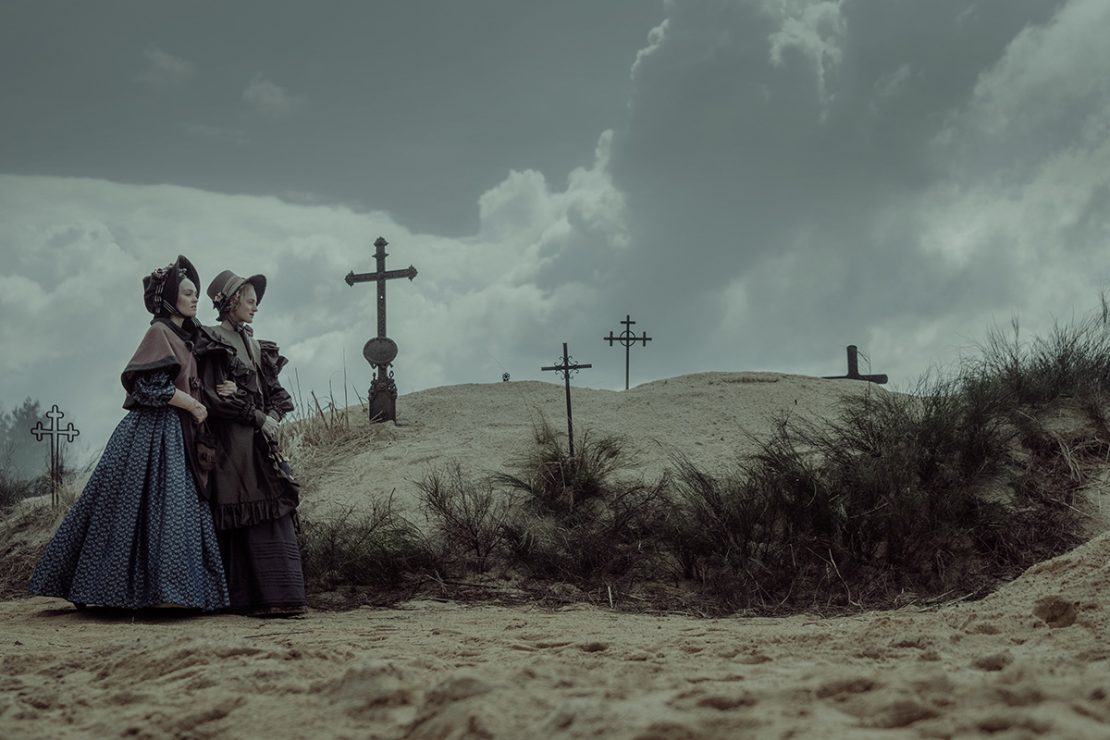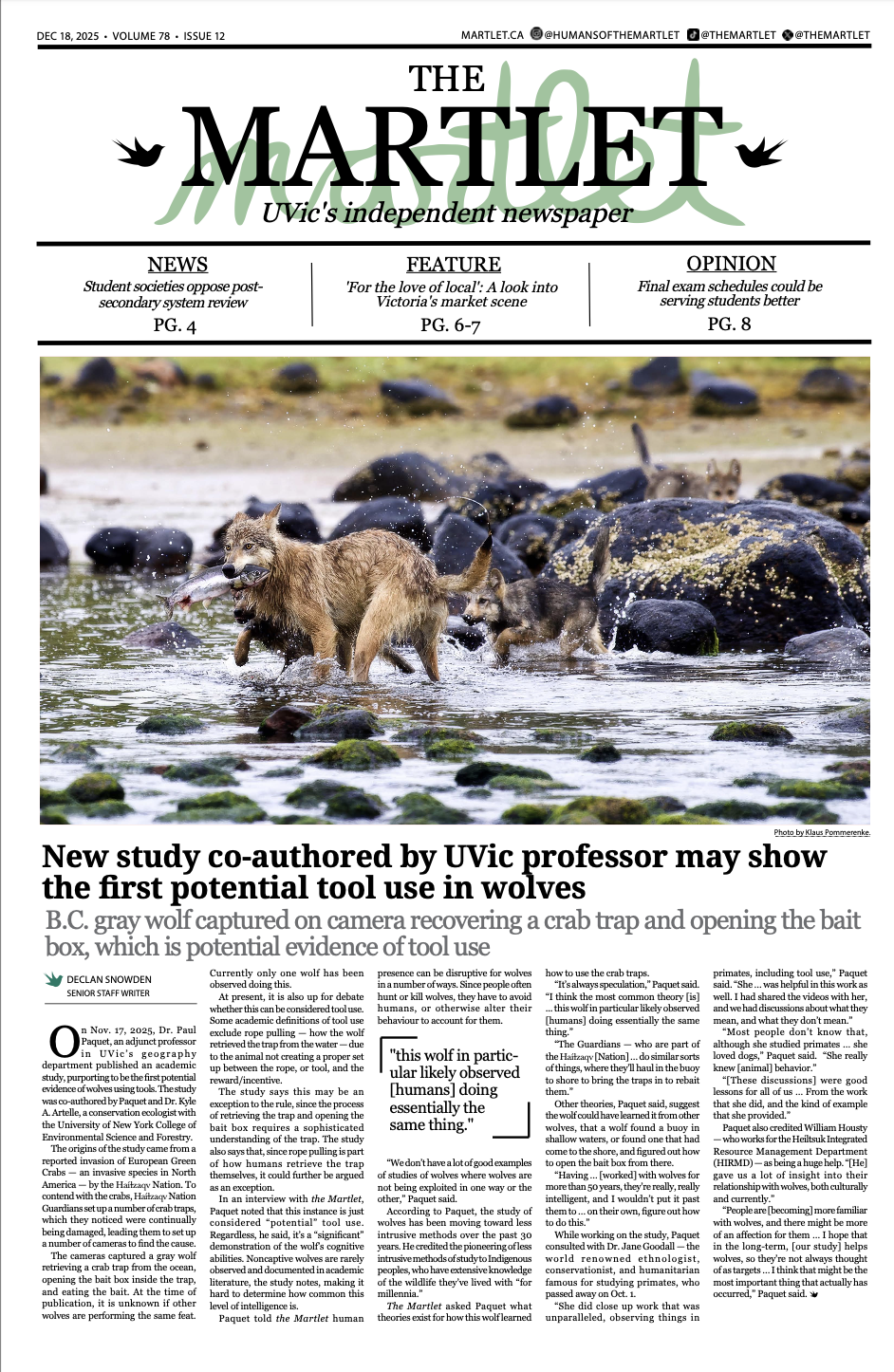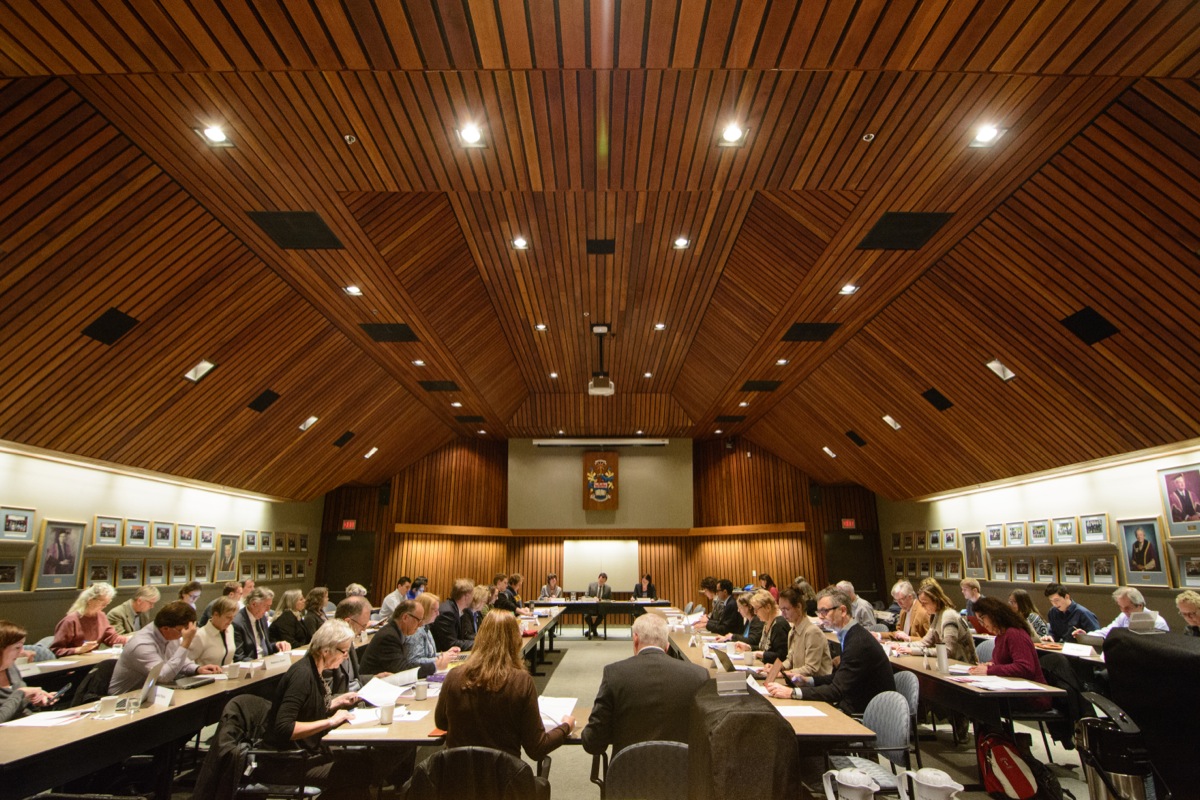Robert Eggers brings his characteristic folk-horror approach to remake of vampire classic

Photo via Universal Pictures.
In the first ten years of his career, filmmaker Robert Eggers has made a name for himself as a purveyor of folk horror. His feature releases, beginning with 2015’s The Witch, explore the power of ritual and the supernatural, lingering in the dark edges of human spirituality, and its overlap with sexual desire. Nosferatu, then, seems a sensible next step for Eggers.
His films are filled with symbols and artifacts suggestive of much older, almost primordial religion. In The Lighthouse (2019), Winslow (Robert Pattinson) finds an ivory scrimshaw of a mermaid, which later appears in his dreams. The lamp atop of the lighthouse takes on a religious dimension for Thomas Wake (Willem Dafoe), but also becomes an object of erotic fixation. In The Northman (2022), a party of Viking raiders partake in a ritual — donning animal pelts to assume traits of the animals themselves — and protagonist Amleth (Alexander Skarsgård) is reminded of his oath of vengeance in a dream sequence by a seeress (Björk).
In all his films, ancient spirituality molds and transforms human psychology, revealing dark inner truths about ourselves.
According to Eggers, Nosferatu has been a dream project of his for many years. The original Nosferatu, released in 1922, was an unlicensed, silent-film adaptation of Bram Stoker’s Dracula by the German filmmaker F.W. Murnau. Although pared down to suit a cinematic runtime, Murnau’s film largely follows the same classic story.
In Eggers’ version, Thomas Hutter (Nicholas Hoult) is the young, broke — and most importantly, newly wed — employee of the estate agent Herr Knock (Simon McBurney). Seeking financial stability for himself and his wife Ellen (Lily-Rose Depp), Hutter travels from his seaside German home of Wisborg to Romania, to arrange the sale of a house in Wisborg to Count Orlok (Bill Skarsgård). Orlok, unknown to Hutter, has ulterior motives for his relocation, shown in the film’s beautifully horrific opening scene.
Eggers’ penchant for folktales and the occult comes across most strongly, perhaps, in a scene where Hutter is awakened in the middle of the night by the residents of the Romanian town he visits , as they perform the ritualistic killing of a vampire. Like all Eggers films, the scene suggests the presence of a deep and realized belief system that both Hutter, and the viewer, are strangers to.
Eggers is content to let this scene play out, providing both foreshadowing, and fleshing out the broader world in which the film takes place. If nothing else, it is a creative decision which improves drastically on the corresponding scene in the original film.
Skarsgård and Depp deliver the standout performances in this film. Orlok, played with old-world gravitas and aristocratic menace by Skarsgård, is a compelling new imagining of the character. His voice is booming and resonant, invoking dread with every syllable. Visually, he is terrifying — the prosthetics and makeup transform Skarsgård into a towering, emaciated corpse.
The decision to not reproduce the iconic look of the character from the 1922 film, where he was played by Max Schreck, but instead create a new identity for him, goes a long way to make Eggers’ take on Nosferatu feel fresh and compelling.
Depp brings some much-needed depth to the character of Ellen, who was unfortunately rather one-note in the original. Her performance is utterly gripping, moving from grief-stricken and terrified in one scene, to performing haunting depictions of possession in the next.
In addition to Depp’s performance, the script gives Ellen a more significant role in the story. Eggers’ retelling positions her as the victim of both Orlok’s lust and of mid 19th-century medicine, which routinely neglected women’s health issues. Women’s issues were often written off as “hysteria” — as both Ellen’s friends, and her physician, Dr. Sievers (Ralph Ineson), do several times in the film.
Visually, Nosferatu is stunning. The sets — Wisborg and Orlok’s castle especially — are lovingly crafted, and look suitably gothic. Eggers recreates several iconic shots from the original; Orlok’s shadow cast against the wall as he infiltrates Ellen’s home, the grave-strewn beach where Ellen tells Anna (Emma Corrin) of her growing sense of doom, and the black chariot which meets Hutter at a desolate crossroads. These shots pay homage to the original film, even among areas Eggers opted to make changes.
If anything truly negative can be said about Nosferatu, it is that the film is not particularly original. Because it is a remake of a much older film, and because vampire stories are fairly commonplace these days, Nosferatu probably won’t show you anything you haven’t seen or read elsewhere. Even so, it expands on the original and is an example of a remake done well — to truly horrifying effect.








